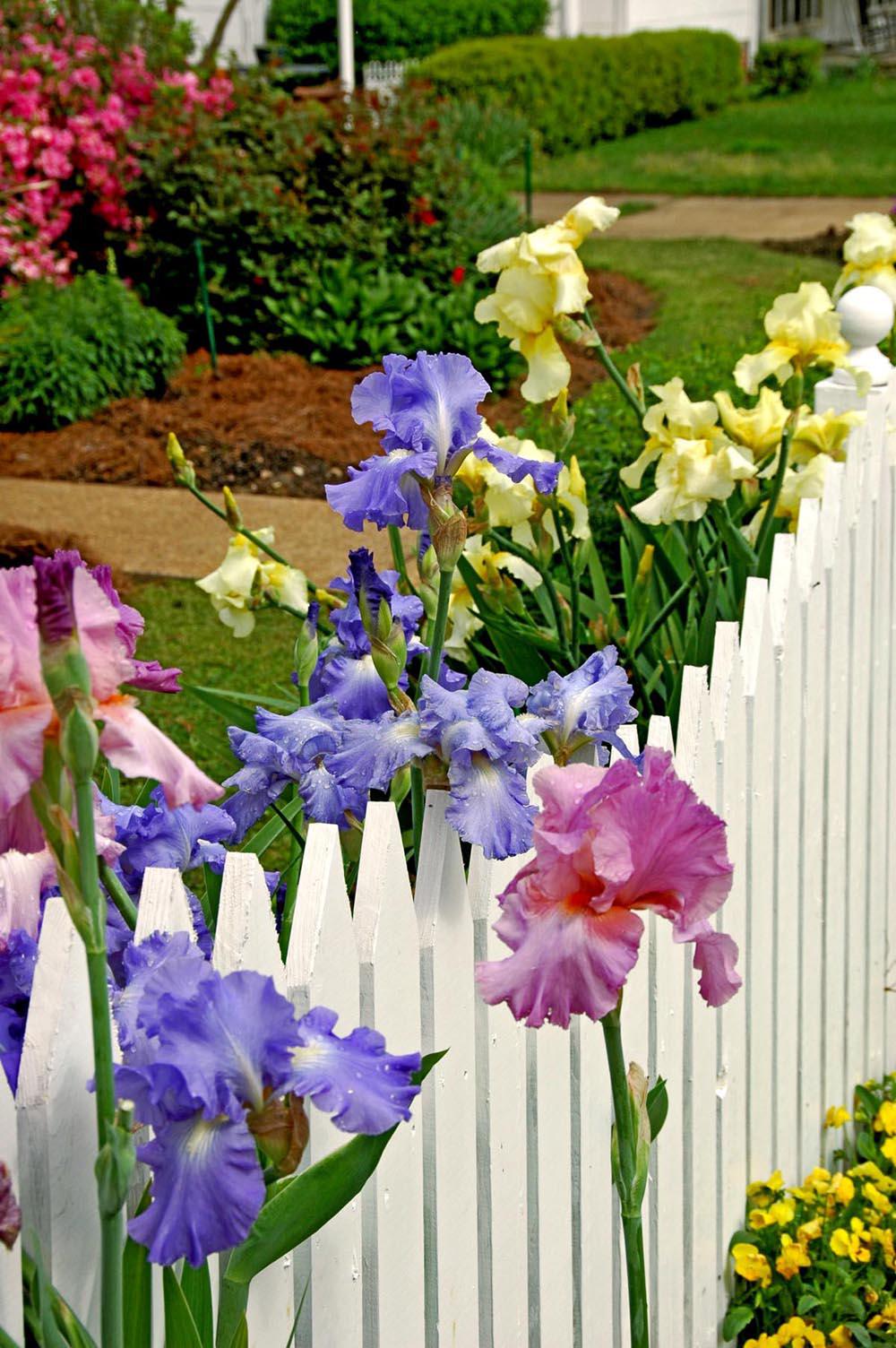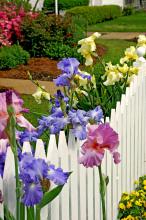Information Possibly Outdated
The information presented on this page was originally released on April 19, 2007. It may not be outdated, but please search our site for more current information. If you plan to quote or reference this information in a publication, please check with the Extension specialist or author before proceeding.
Iris family couples beauty, versatility
By Norman Winter
MSU Horticulturist
Central Mississippi Research & Extension Center
Irises are among the most versatile plants for the North American landscape. They are prized for both flower and foliage.
Mention iris, and the first one that comes to mind is the bearded iris. The spring bloom of the bearded iris is a site to behold because of the size and shape of the bloom and its deeply saturated colors.
Irises don't require a cold period to bloom like most spring bulbs and are cold hardy to zone 3. That makes them well suited from zone 3 to zone 9.
This is one of those times when Southerners become jealous because our irises are just past peak and gardeners in the North still can look forward to iris blooms.
If you have never gotten close to a bearded iris, you may wonder where it gets its name. It is because of the hairs that are clearly visible in the middle of the falls, or petals.
Botanically speaking, the bearded iris is Iris barbata, but hybrids make the taxonomy a struggle for the best in science. The Siberian Iris (Iris sibirica), Japanese Iris (Iris ensata) and the Louisiana iris (Iris brevicaulis, I fulva, I. giganticaerulea , I hexagona and I. nelsonii) are all cold hardy over almost as wide a range and are considered practically maintenance-free and elegant.
One that you have heard a lot about is the African iris Dietes bi-color. This one was made famous by one of the morning programs on HGTV. Most of us had never grown it and believed the books reporting that is cold hardy only in zone 9. My main reference book says temperatures lower than 23 degrees will do it in.
However, it seems to be more cold hardy than originally believed. For about five years, Mississippi State University plants have come back in trials in zone 8a. I have also witnessed it returning in zone 7. Drainage may be the key.
To be accurate, it is more like a grass than an iris. Sure it blooms, but the flower would never cause you to stop and take a picture.
It does offer an incredibly wonderful texture for the landscape and has a graceful appearance as the center plant in a large, mixed container. When you think of the key ingredients to a mixed container as “thriller, spiller and filler,” this could be your center thriller plant, reaching 3 feet tall. So even if it is not cold hardy where you live, you could still use it for the season in large mixed containers.
Lastly is the majestic Yellow Flag iris, Iris psuedacorus. The yellow flowers are certainly to be enjoyed, but it is the foliage that is magnificent, reaching 3 to 5 feet tall. Use the Yellow Flag around water gardens, dry creek beds or to give a tropical texture to any garden.
With their beautiful flowers and exquisite foliage, the iris family offers a lot of versatility for the landscape. I hope you will give them a try.




